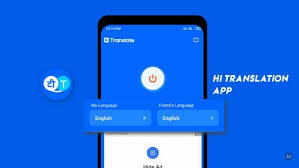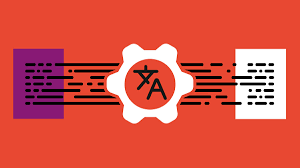
Monetization Strategies for Translator Applications
Introduction
Translator apps are in high demand globally, with popular examples like Google Translate and DeepL serving millions of users daily. To turn user traffic into revenue, developers must choose effective monetization strategies for translator applications. These strategies range from freemium and subscription models to advertising and data licensing. Selecting the right mix helps cover development costs, fund new features, and keep users satisfied.
Benefits of Monetization Strategies for Translator Applications
Implementing a revenue model has clear advantages: it generates income to improve the app and supports ongoing development. Key benefits include:
- Sustainable revenue: Monetization allows app publishers to generate income and reinvest in app updates and user experience.
- Enhanced features: Paying users fund advanced features (e.g., offline translation, specialized dictionaries), which can be expanded over time.
- User engagement: Freemium or premium options attract users with free basic features and incentivize upgrades. For example, offering a free core app encourages trial and makes users more likely to pay for premium capabilities.
- Market credibility: A well-monetized app signals quality and commitment, attracting enterprise clients or partnerships (e.g., translating APIs for businesses).
Freemium Models in Monetization Strategies for Translator Applications
The freemium model offers the app for free while charging for premium features. It’s one of the most effective monetization strategies for translator applications. Developers provide a basic translation service at no cost and upsell advanced capabilities (voice translation, document uploads, ad-free experience, etc.). For instance, DeepL uses this approach: the free tier limits characters per translation and monthly documents, funneling heavy users into paid plans. In practice:
- Free tier: Unlimited basic translations to build a large user base.
- Premium tier: Unlocks features like higher-volume translations, faster processing, or enhanced data security.
- Upgrade path: Users “get hooked” on the free service and upgrade when they need more (per [16†L292-L300], the free tier is limited, but the paid DeepL Pro removes those limits).
By balancing free functionality with compelling paid extras, freemium models convert many free users into subscribers without alienating casual users.
Subscription Plans: Monetization Strategies for Translator Applications
Subscription models charge users a recurring fee (monthly or yearly) for full access. As a monetization strategy for translator applications, subscriptions yield steady income and encourage long-term use. For example, DeepL Pro offers tiered plans – a starter tier at approximately $104.88/year per user. These plans often include benefits such as unlimited translations, priority support, and advanced tools. Advantages of subscriptions include:
- Predictable revenue: Regular payments provide a stable income stream.
- Higher commitment: Subscribers are more engaged and less likely to churn.
- Feature investment: Developers can allocate resources to refine premium features knowing there’s a steady budget.
Subscription plans stand out as one of the best monetization strategies for translator apps, giving users unlimited access to premium features for a flat fee. To implement this, offer optional subscriptions for power users (e.g., travelers, professionals) while keeping a free or lower-tier option to attract new users.
In-App Purchases (IAP)
In-app purchases let users buy individual features or content within the app. For translator applications, common IAPs include buying additional language packs, advanced voice modules, or one-time feature unlocks. This approach complements freemium models: basic translation is free, but users can pay for extras. For example, an app might let users:
- Unlock offline dictionaries for specific languages.
- Purchase extra “premium hours” of high-speed processing.
- Buy one-time boosts (like double translation speed).
This method boosts revenue without requiring a subscription commitment. Offering premium features via IAP encourages users to unlock the full suite of tools. Best practices include making the IAP items clearly valuable and offering a smooth, localized checkout experience.
Advertisements (Ads): Monetization Strategies for Translator Applications
Advertising is a common option for free translation apps. In this model, the app displays ads (banners, interstitials, or video ads) to free users and earns revenue from advertisers. An overview of translator app models notes that free apps often “contain ads in some form” to generate income without charging users. For example:
- Banner or native ads: Display small ads at the top/bottom or inline with results.
- Interstitial/video ads: Show occasional full-screen ads during transitions (e.g., after a translation completes).
Ads can be lucrative if integrated thoughtfully. Experts suggest limiting ad frequency to avoid frustrating users and targeting relevant ads (e.g., language courses, travel deals) to enhance value.
B2B Licensing
Beyond consumer monetization, translator apps can target businesses and developers. B2B licensing involves selling the translation engine or API to companies. Examples include:
- API subscriptions: Companies pay to access the app’s translation API (e.g., DeepL API Pro charges about $5.49/month plus per-character fees, and Google Cloud charges around $20 per million characters).
- Enterprise contracts: Offer custom deployment (on-premise or cloud) or white-label solutions for enterprises (e.g., customer support tools, e-commerce localization).
- SDK licensing: Developers pay for a software development kit to embed the translator in their own apps (typically per-user or per-use).
These B2B models can command high prices and larger contracts. Selling custom API access or enterprise-level tools diversifies revenue and reaches corporate clients who demand high accuracy and reliability.
Affiliate Marketing
Affiliate marketing taps into partnerships with related services. In this strategy, the app promotes third-party products or services and earns a commission on referrals or sales. Translator apps can partner with:
- Travel booking sites: Bookings for tours or hotels, since travelers often need translation.
- Language-learning platforms: Courses or apps to learn foreign languages.
- Educational products: Such as physical dictionaries or study materials.
For example, a translator app might include links like “Learn more language with [Partner Course]” and receive a fee for each signup. This strategy adds income with minimal disruption, especially when recommendations are relevant and subtly integrated.
Data Monetization
When done ethically and legally, user data can be a valuable asset. Data monetization means selling anonymized and aggregated usage insights. For translator apps, this could involve:
- Usage analytics: Trends in languages translated, popular phrases, peak usage times. Market research firms or language service providers may find this data useful.
- Machine learning: Selling large corpora of translated sentence pairs to AI companies to improve models.
- Geo insights: General location-based translation patterns (e.g., for tourism insights).
Ensure compliance with privacy laws (e.g., GDPR, CCPA) and inform users about data handling. Done right, this becomes a passive revenue stream that transforms logs into valuable insights.
Localized Pricing
Apps are global by nature, so pricing should be fair across regions. Localized pricing means adjusting app prices for local currency and purchasing power. For example, charging $9.99 USD in the U.S. but ₹699 in India (instead of a direct conversion). In practice:
- Currency conversion: Always show prices in local currency with local payment options.
- Income adjustment: Use indices like GDP or cost-of-living to set fair prices.
- Region tiers: Group countries into pricing tiers (e.g., premium, standard, budget).
Localized pricing improves sales and user satisfaction. Global app developers have found that uniform pricing can lead to backlash or low conversions in price-sensitive markets.
Monetization Mix
The best approach is often hybrid. Relying on a single model can limit growth or cause revenue volatility. Successful apps combine several strategies:
- Freemium + Ads: Offer the core app free with occasional ads; let users pay to remove ads and unlock features.
- Subscription + IAP: Provide a subscription for full access while selling premium add-ons to non-subscribers.
- Ads + Affiliate: Use ads for volume-based revenue and affiliate links for higher commissions.
- B2C + B2B: Serve consumers with subscriptions and ads, and businesses with licensing and APIs.
Test different combinations, review analytics, and adjust based on user behavior and revenue performance.
Common Mistakes to Avoid
Avoid these monetization pitfalls:
- Overloading with ads: Too many ads drive users away.
- Ignoring UX: Poor placement of paywalls or intrusive ads frustrates users.
- Bad pricing strategy: Prices that are too high or not localized deter purchases.
- Overreliance on one stream: Lack of diversification increases risk.
- Neglecting analytics: Without data, you can’t optimize your strategy. Use A/B testing and user feedback loops.
Balance is key: never let monetization harm the user experience.
Future Trends
Translator apps will continue evolving. Trends to watch:
- AI and LLM integration: Large Language Models will improve context-aware translations and expand monetization potential.
- Multimodal translation: Translation of voice, images, and video will become standard, creating new premium opportunities.
- Enterprise expansion: Specialized services for industries (e.g., legal, medical) offer high-margin B2B deals.
- Hyper-personalization: Tailored vocabularies, custom glossaries, and dialect recognition will become premium features.
- Micropayments and tokens: Blockchain-based translation models may emerge, letting users pay per word or session.
Stay updated and adaptable to remain competitive.
Conclusion
Monetization is vital for any translator app’s success. By combining monetization strategies for translator applications—from freemium and subscriptions to ads, licensing, and beyond—developers can create a reliable revenue stream while keeping users happy. Key takeaways: offer value in both free and paid tiers, diversify income sources, and tailor pricing to users’ markets. Carefully measure user responses and revenue metrics to refine your approach. With the right mix, your translation app can grow a loyal user base and a profitable business.
Stay connected with us on HERE AND NOW AI & on

